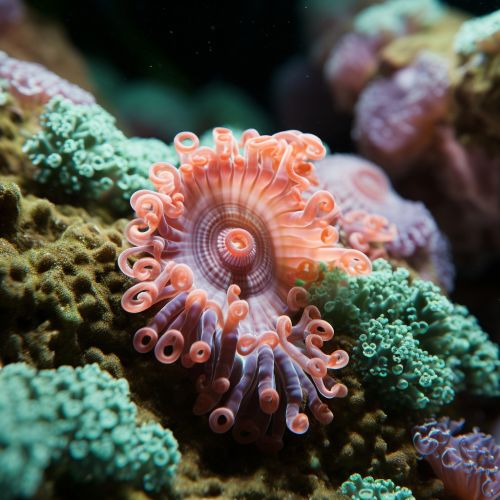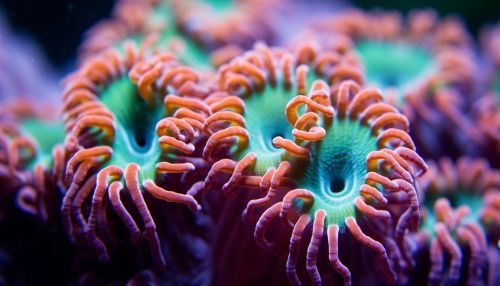Symbiont Shuffling
Introduction
Symbiont Shuffling is a biological phenomenon that occurs in various forms of life, particularly in coral species. It is a process where the host organism changes its symbiotic partners in response to environmental changes. This process is a survival strategy that allows the host to adapt to different environmental conditions by associating with different symbionts that are better suited to the new conditions.
Definition and Overview
Symbiont Shuffling refers to the process where a host organism, such as a coral, changes its symbiotic partners. This change is often triggered by environmental stressors such as changes in temperature, light intensity, or nutrient availability. The host will expel its current symbionts and replace them with a different species or strain that is better adapted to the new conditions. This process is also known as "symbiont switching" or "symbiont replacement".


Mechanisms of Symbiont Shuffling
The exact mechanisms of symbiont shuffling are not fully understood, but several theories have been proposed. One theory suggests that the host organism expels its current symbionts when they become less efficient at providing the necessary nutrients. The host then takes up new symbionts from the surrounding environment. Another theory proposes that the host maintains a diverse community of symbionts within its tissues, and different symbionts become dominant under different environmental conditions.
Role in Coral Bleaching and Recovery
Symbiont shuffling plays a significant role in coral bleaching and recovery. Coral bleaching is a stress response in which corals expel their symbiotic algae, leading to a loss of color and potentially death. However, if the stressor is removed or reduced, corals can recover by taking up new symbiotic algae, a process facilitated by symbiont shuffling. This ability to change symbionts allows corals to adapt to changing environmental conditions and may play a crucial role in their survival in the face of climate change.
Implications for Coral Reef Conservation
Understanding the process of symbiont shuffling has important implications for coral reef conservation. By manipulating the symbiont communities in corals, it may be possible to enhance their resilience to environmental stressors such as warming ocean temperatures. However, more research is needed to fully understand the mechanisms of symbiont shuffling and its potential applications in coral reef conservation.
